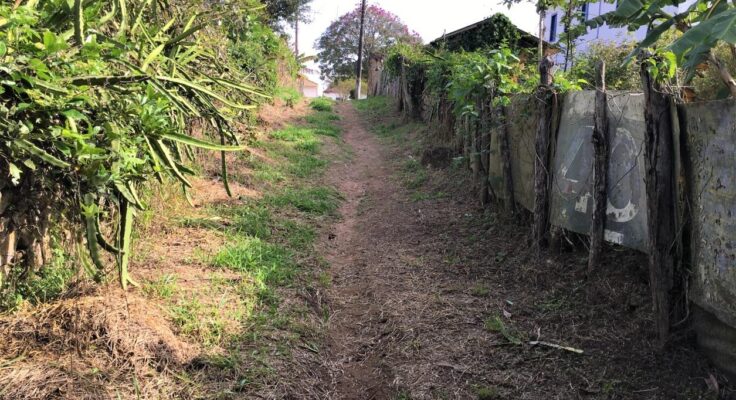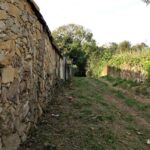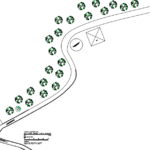
Great Fountain Alley
Old alley flanked by stone masonry walls and stone paving, which begins at Church square (where the Moura Lima Manor is located) and, at the end, in the lower part, there is an old fountain or tank that received water from a trench. At the fountain, the ancient residents fetched water, bathed and washed clothes, at least until the first decades of the 20th century. It was an old social gathering place. Today the historic site is visually abandoned, in need of targeted cleaning and heritage revitalization.
Of all the alleys, this one is the longest: it starts at Church Square (or Padre Bernardo Firmino Square), next to the fork of Rosalino Alley. From there, it goes downhill until it reaches the place where the Great Fountain used to be. It is an interconnection path between the Church Square (or Padre Benedito Firmino Square) and the top of Padre Antônio Cândido Street.
Marked by the dry stone walls at the back of the backyard areas, on one side corresponding to that of the Moura Lima Manor, many sections are still clad in original irregular stones. It is interesting to note that the alley used to be a disposal area for domestic waste, placed inside metal drums. It keeps a record of ways of living of an unidentified date. As they are half buried in the ground, some exposed objects can be seen. Of incomparable scenic beauty, the vegetation composed of large trees that flank the alley, create a tunnel to the lowest point where the Great Fountain is located, and through which passes a watercourse that fed this area used by washerwomen.
Route with a steep slope over a length of 350 meters.
Narrativa
According to Ms. Divina, owner of the Moura Lima Manor (a large house next to the alley), the water was very good and clean. The water emanating from the fountains would be captured at Serra do Lessa (mountain range), with the support of gullies and pipes.
Mayor Dr. Sena installed the iron and brick masonry fountains (built by the artist José Vitor), aiming to improve the water supply network at strategic points on the streets of Bação. This took place at the beginning of the 20th century.
The first houses where internal water supply pipes were installed were the Moura Lima Manor, owned then by Mr. Zeca Lima, grandfather to Lady Divina, and at Father Antônio Cândido’s house. After the installation of plumbing for the residences, the fountains became historical and artistic relics of Bação – historical sites of great patrimonial importance.
Registration in other heritage and environmental bodies
It appears in the list of Inventoried Assets of the Municipality of Itabirito.
Notes
-This set of inventories was prepared exclusively for the purpose of registering the cultural assets indicated by the community of São Gonçalo do Bação to meet the signaling, digital registration and enhancement program for Alleys, Fountains and Historic Attractions Circuits; - The contents of these inventories, if used in reports, other types of inventories and/or publications, must be duly cited, following ABNT rules; - The authorship of the photos and the origin of the iconographic collection (either personal or family collection) must be mentioned.
Bibliography
| DAMASCENO, Thiago Luiz M. “Chafarizes de São Gonçalo do Bação”. Monografia apresentada no Centro de Educação Tecnológica /CET - Itabirito, 2004. |
|---|
Information sponsors
Alenice Baeta, Cristina Cairo, Hudson Faria e Pedro Loredo








